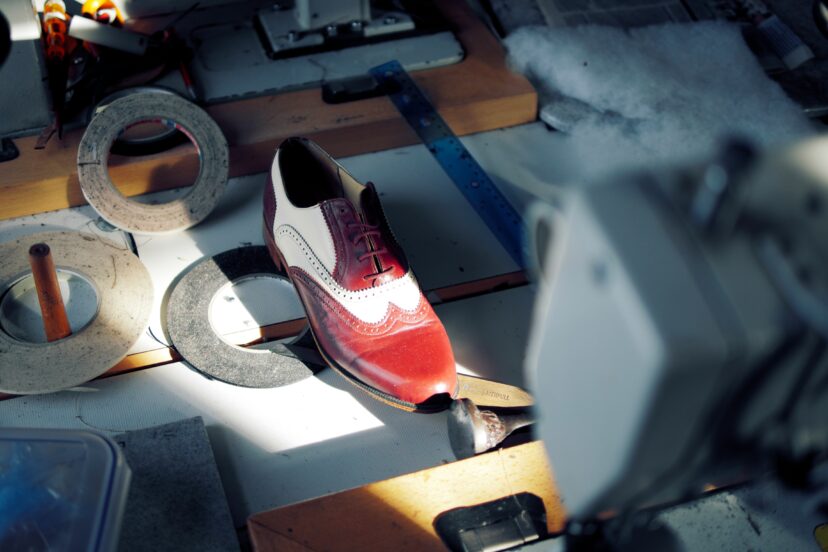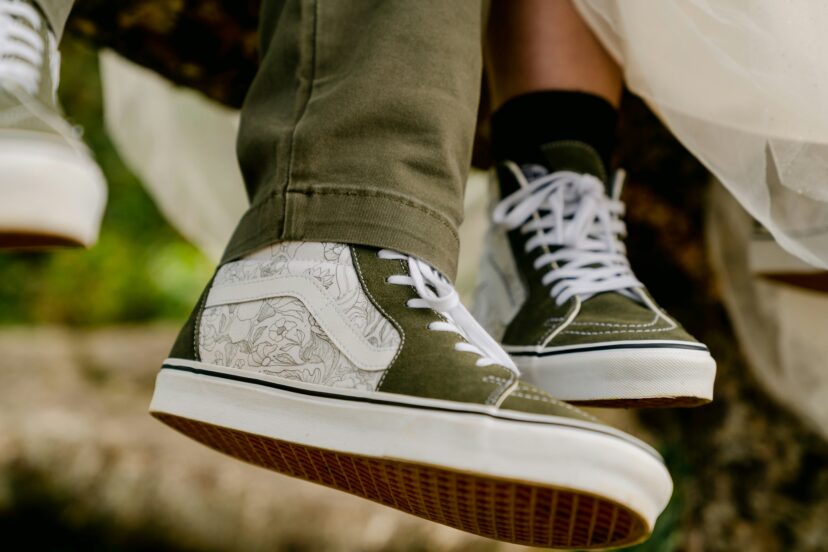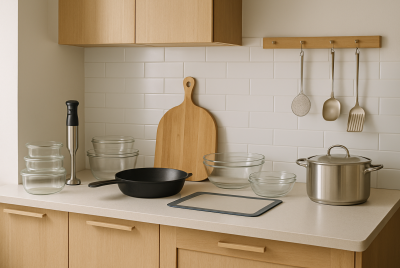Sustainable Shoes: Eco-Friendly Footwear for a Greener Future
We may earn a commission for purchases made using our links. Please see our disclosure to learn more.
Most regular shoes are made with synthetic materials (like thermoplastic polyurethane and polyurethane) that can harm the planet and contribute to pollution. What if there were an eco-friendly footwear that could take you to places while ensuring a greener future? Say hello to sustainable shoes! In this article, you’ll understand what sustainable shoes are, how they’re made, and some great options to try!
What Are Sustainable Shoes?
Sustainable shoes are designed to minimize environmental damage. What does it mean then? It means that they are produced using waste-reduction techniques, ethical labor standards, and environmentally friendly materials (like cork, hemp, and organic cotton). These shoes are made to last, unlike mass-produced, inexpensive shoes that break easily. The goal is to alter our perceptions of consumerism and fashion, not merely to produce a “green” product.
Why Should You Choose Sustainable Shoes?
Let’s face it: the majority of us have far more shoes than we actually need. Sometimes we even buy shoes only to keep in the closet, right? What becomes of those ancient pairs? Landfills, usually. I once bought a rubber shoes, mainly because I was attracted to their style. But then, I only have used them twice. Selecting eco-friendly footwear contributes to waste reduction, resource conservation, and fair labor practices. Furthermore, a lot of eco-friendly footwear options are at least as fashionable as traditional footwear. You receive gorgeous shoes, and the environment gains some breathing room.
The Environmental Impact of Regular Shoes
The synthetic materials used to make most traditional shoes take a very long time to break down. Remember that every pair of old sneakers you’ve thrown away is most likely still out there. Greenhouse gases and dangerous chemicals are also released into the environment throughout the production process. The impact is enormous because millions of shoes are made annually. It’s time to reconsider how we purchase shoes.
Key Features of Sustainable Shoes
What features should you look for in a sustainable shoe, then? Examine the materials first; natural textiles like bamboo, hemp, and organic cotton are excellent options. Next, think about the manufacturing procedure. Do employees receive fair compensation? Does the company openly discuss its sustainability initiatives? Finally, consider lifespan. In addition to being constructed from environmentally friendly materials, a truly sustainable shoe is long-lasting, meaning you won’t need to replace it every few months.
Materials Used in Sustainable Shoes
Sustainable shoes are made with selected resources to lessen their impact on the environment. Because it is grown without the use of harmful pesticides, organic cotton is a fantastic substitute for ordinary cotton. Another great option is hemp, which grows with much less water and is quite strong. Because bamboo is naturally antimicrobial and lightweight, it’s ideal for breathable shoes. In order to transform garbage into fashionable, useful shoes, some brands even use recycled plastic. Then there is the cork—yes, the same substance that is used as stoppers for wine bottles! It is lightweight, long-lasting, and harvested without causing damage to trees.
How Sustainable Shoes Are Made
Eco-friendly footwear brands go the extra mile to reduce waste and pollution. Many use innovative production methods like 3D printing, waterless dyeing, and biodegradable soles. Some brands even offer take-back programs where old shoes can be returned and recycled into new ones. The goal is to create a circular economy where nothing goes to waste. Instead of mass-producing cheap shoes that fall apart, these companies focus on quality and craftsmanship.
Scientific Insights on Sustainable Footwear and Circular Manufacturing
Sustainable footwear is revolutionizing the fashion industry, but how effective are these innovations in reducing environmental impact? A study on the environmental impact of sustainable footwear highlights that eco-friendly shoes made from recycled and biodegradable materials significantly lower carbon emissions and waste compared to traditional footwear. Meanwhile, research on sustainable design and manufacturing for the footwear industry explores circular manufacturing techniques that extend the life cycle of shoes, reducing reliance on virgin materials. Together, these studies underscore the importance of sustainable materials and closed-loop production in minimizing environmental harm while promoting responsible fashion.

Are Sustainable Shoes More Expensive?
At first glance, sustainable shoes might seem pricier, but here’s the thing: they last longer. Fast-fashion shoes might be cheap upfront, but you end up replacing them every few months. When you invest in a high-quality, sustainable pair, you’re actually saving money in the long run. Plus, you’re supporting ethical brands that prioritize people and the planet over profits.
The Rise of Vegan Shoes
Vegan shoes are having a moment, and for good reason. Traditional leather production is one of the biggest polluters in the fashion industry. Vegan alternatives like mushroom leather, apple leather, and even pineapple leather (yes, really!) offer the same durability without harming animals. And with more brands embracing plant-based materials, there are plenty of stylish, high-quality options to choose from.
Popular Sustainable Shoe Brands
If you’re looking to make the switch, several brands are leading the way in sustainable footwear. Allbirds is famous for its ultra-comfy wool and tree-fiber shoes. Veja uses organic cotton and wild rubber sourced from the Amazon. Rothy’s turns recycled plastic bottles into stylish, machine-washable flats. Even mainstream brands like TOMS are stepping up their game with eco-friendly collections. The options are endless—you just need to know where to look.
Products to Consider
If you’re looking for stylish, eco-friendly footwear, here are some top recommendations that blend sustainability with comfort and durability:
Casual & Everyday Wear
- TOMS Alpargata Eco Slip-Ons – Made with recycled and natural materials, plus TOMS donates a portion of profits.
- Hey Dude Wally Eco-Friendly Loafers – Lightweight and made from recycled plastics.
Athletic & Performance Shoes
- New Balance Fresh Foam Hierro v7 – Includes recycled materials and is designed for sustainability.
- WHITIN Minimalist Barefoot Sneakers – Vegan-friendly, lightweight, and designed for natural foot movement.
Hiking & Outdoor Shoes
- Merrell Moab 3 Eco Hiking Shoes – Made with recycled laces, mesh, and an eco-friendly Vibram sole.
- Columbia Fairbanks Omni-Heat – Features partially recycled materials for an insulated, eco-conscious hiking boot.
How to Identify Greenwashing in Shoe Brands
Not all brands that claim to be “eco-friendly” actually are. Greenwashing is when companies use misleading marketing to appear more sustainable than they really are. So how do you spot it? Look for brands that provide concrete details about their materials, sourcing, and manufacturing processes. If a company throws around words like “green” and “natural” without backing them up with facts, that’s a red flag.

How to Take Care of Your Sustainable Shoes
Taking care of your shoes is just as important as choosing sustainable ones in the first place. Clean them regularly using mild, natural cleaners instead of harsh chemicals. Store them in a dry place to prevent mold and damage. And if they start to wear out, consider repairing them instead of tossing them. A little TLC can go a long way in making your shoes last.
Can You Recycle Your Old Shoes?
Absolutely! Many brands now offer recycling programs where you can send back worn-out shoes to be repurposed into new products. If your shoes are still in good condition, donating them to charity is a great way to give them a second life. Even if they’re beyond repair, there are organizations that specialize in breaking them down and reusing the materials. Every little effort helps keep waste out of landfills.
The Future of Sustainable Footwear
Shoe technology is advancing fast, and the future of sustainable footwear looks bright. Scientists are even developing biodegradable shoes made from fungi—yes, mushrooms! As awareness grows and demand increases, we can expect even more innovative materials and eco-friendly practices to emerge. The next decade could completely change the way we think about shoes.
How to Incorporate Sustainability Into Your Wardrobe
Sustainable fashion isn’t just about shoes—it’s about making thoughtful choices in everything you wear. Start by investing in quality over quantity. Buy from brands that prioritize ethical production. Consider second-hand shopping to reduce waste. And when you do buy something new, ask yourself if it’s something you’ll truly wear for years to come.
Final Thoughts
Sustainable shoes aren’t just a passing trend—they’re a necessary shift toward a more responsible fashion industry. By choosing eco-friendly footwear, you’re making a difference in reducing waste, supporting ethical practices, and investing in quality. It’s not about being perfect but about making better choices one step at a time. So next time you’re in the market for a new pair, consider making the sustainable choice—it’s a small step with a big impact.
FAQs
1. Are sustainable shoes really durable?
Yes! Many sustainable brands focus on high-quality materials and craftsmanship, meaning they last longer than fast-fashion footwear.
2. What is the most eco-friendly shoe material?
Organic cotton, hemp, bamboo, and recycled plastics are among the top choices for sustainability.
3. How can I properly get rid of my old shoes?
Look for recycling programs, donate them, or recycle them through specialized organizations.
4. Are vegan shoes always sustainable?
Not necessarily. Some vegan materials are synthetic and not biodegradable. Always check a brand’s sustainability efforts.
5. Can I make my existing shoes more sustainable?
Absolutely! Taking care of them, repairing them when needed, and extending their lifespan all contribute to sustainability.




